Das letzte Testspiel vor dem Pflichtspielauftakt gewann der FCSP mit 1-0 gegen SønderjyskE Futbold. Der Testspielsieg darf durchaus als verdient bezeichnet werden. Da ich bekanntlich mein Herz ein wenig an taktischen Dingen auf dem Fußballplatz verloren habe, möchte ich die Eindrücke des gestrigen Spiels und die Neuerungen im Spiel des FCSP unter Timo Schultz etwas genauer beleuchten.
Es scheint als habe sich der FCSP auf eine Dreierkette als Formation der Wahl festgelegt. Zumindest wurde damit gestern über die volle Spielzeit agiert. Die Formation lässt sich am besten als ein 3-5-2 beschreiben. Und diese Formation hat recht gut funktioniert, denn dem einen Tor hätten durchaus noch ein paar weitere folgen können. Und andersherum gab es keine nennenswerten Abschlüsse gleicher Güte des Gegners.
FCSP im Spielaufbau 1. Halbzeit
Die Dreierkette bestand aus Buballa, Ziereis und Avevor. Als Flügelvertediger agierten Dittgen links und Ohlsson rechts. Zentral waren Aremu und Knoll aktiv, während Daschner und Kyereh in den offensiven Halbräumen und Tashchy meist zentral vorne agierte.
Auffällig im Spielaufbau war das enorme Hochschieben der Flügelverteidiger auf die Höhe der letzten Kette von SønderjyskE. Noch bemerkenswerter und damit ein klarer Unterschied zu vorherigem Agieren mit einer Dreierkette war das Positionsspiel von Daschner und Kyereh. Die ordneten sich zwar auch immer in der letzten Kette ein, stachen von dort aber immer wieder in die Halbräume, um als Relay-Station für den Aufbau zu dienen. In den seltensten Fällen konnten sie direkt aufdrehen. Ohnehin wurde zum Aufdrehen immer das „Spiel über den Dritten“ genutzt, bei dem ein Spieler den Ball mit dem Rücken zum Tor nur kurz klatschen ließ zu einem Spieler der bereits mit Blickrichtung gegnerisches Tor positioniert war. Das ist beileibe keine neue Erfindung, aber beim FCSP wurde bisher selten so strukturiert damit agiert.
Bemerkenswert war auch, dass die beiden äußeren Innenverteidiger, Buballa und Avevor, doch recht weit mit Ball vorrückten, wenn der Raum es hergab. Und davon gab es genug in der ersten Halbzeit, da durch die hohe Positionierung der Flügelverteidiger die gegnerischen Spieler gebunden wurden (und SønderjyskE doch sehr zentrumsfokussiert in diesen Teilen des Spielfelds presste).
Auffällig auch, dass nach Erreichen solcher Räume der Punk auf der anderen Seite abging und sich dort durch schnelles Einlaufen immer wieder eine Option für Diagonalbälle geschaffen wurde (besonders Daschner hat diese Räume bei SønderjyskE häufig erkannt und wollte sie nutzen).

Die beiden Flügelverteidiger schieben enorm hoch. Dadurch konnten die äußeren IV’s mit Ball am Fuß häufig in die Halbräume dribbeln. Daschner und Kyereh waren zwar auch in der letzten Kette positioniert, aber ließen sich von da häufig fallen und waren wichtige Anspielstationen.
FCSP defensiv
Auch defensiv hat sich beim FCSP einiges geändert. Die häufig bemühte, aber eher selten gespielte Maßgabe „Vorwärts verteidigen“ wurde im gestrigen Test meist in die Tat umgesetzt. Bei Ballverlust wurde häufig konsequent und kompakt ins Gegenpressing übergegangen. Das funktionierte in Bezug auf die Erspielung von direkten Torchancen in der zweiten Halbzeit besser als in der ersten (Chancen von Kyereh, 62.min, und Makienok, 67.min, als Beispiel). In der ersten Halbzeit führte es aber meist dazu, dass SønderjyskE mal so gar nicht in einen geordneten Aufbau übergehen konnte und erst gegen Ende der Halbzeit überhaupt so etwas wie längere Ballbesitzphasen erhielt. Das gefiel.
Ebenso gefiel die Konsequenz vieler Spieler in der Verteidigung. Von Daschner bis Dittgen hauten sich viele rein, gingen viele Wege mit, um Räume wieder zustellen zu können. Ohne geht es bei dieser Spielweise auch nicht, da durch die Dreierkette und die hohe Positionierung außen schon ein recht offenes Feld für gegnerische Teams vorhanden sein könnte, wenn sie denn nach Ballgewinn richtig Umschalten.
Ballgewinn ist quasi das Stichwort, um über Afeez Aremu zu sprechen. Egil, der Blogger von IK Start hatte sehr schön formuliert, dass Afeez Aremu der Spieler ist „bei dem die Angriffe des Gegners enden“. Das klang für mich etwas hochgegriffen, denn immerhin gibt es ja auch noch einige andere Spieler, die bei so einem Ballgewinn mitwirken. Aber gestern habe ich dann gesehen, was er meinte: Afeez Aremu ist unglaublich stark darin Bälle zu erobern. Wow! Und nicht nur das, er kann mit dem gewonnenen Ball auch noch eine ganze Menge anfangen. Sicher waren da gestern ein paar Pässe dabei, die vom Timing und der Genauigkeit nicht so gut passten. Aber es scheint mir, als wenn da jemand sehr progressiv im Passspiel unterwegs ist und das ist nicht weniger als zwingend nötig, um aus den Ballgewinnen auch in ein gutes Umschaltspiel zu kommen.
Als Formation würde ich das defensiv sogar nicht als Fünferkette sondern als 3-4-1-2 bezeichnen, im tiefen Pressing. Denn die Flügelverteidiger ließen sich dann doch nicht ganz mit auf Höhe der Dreierkette fallen. Das war aber auch aufgrund der Positionierung von SønderjyskE nicht notwendig und kann in anderen Spielen auch anders aussehen.
Im höheren Pressing agierten Kyereh, Tashchy und Daschner vorne als eine Art Dreierkette, die jedoch nach außen etwas nach hinten abgesetzt war. Erst wenn der Ball von SønderjyskE dann auf die Außenbahn gespielt wurde und der FCSP kein Pressingsignal in Form eines schlecht getimten Passes des Gegners erhielt, formierte sich das tiefe 3-4-1-2.
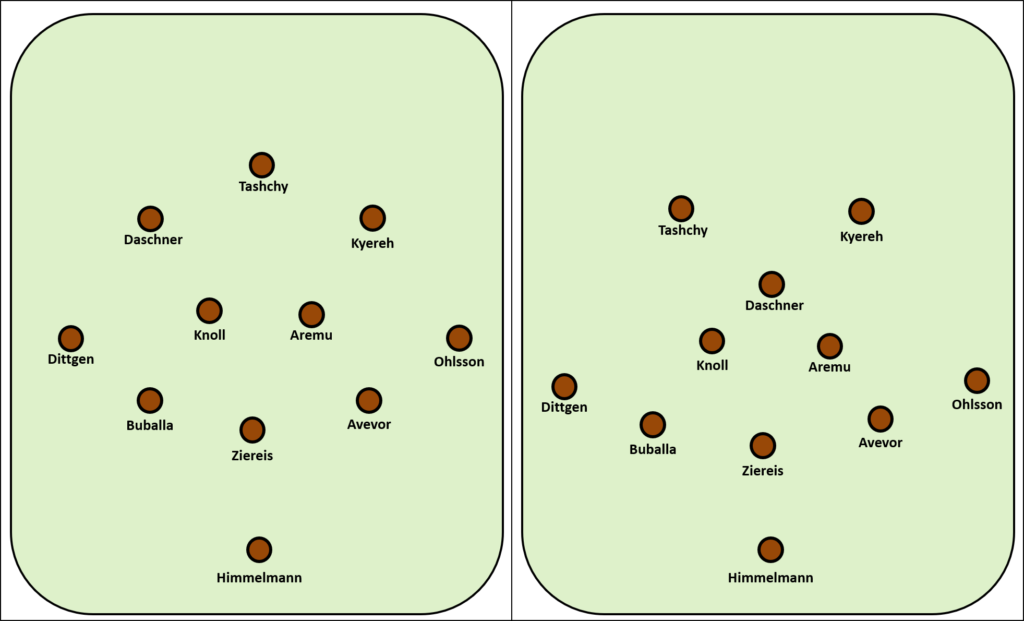
links: Wenn SønderjyskE den Ball noch tief in der eigenen Hälfte kontrollierte, der FCSP aber nicht hoch presste, formte sich eine Art Tannenbaum beim FCSP (3-4-2-1).
rechts: Im tiefen Mittelfeldpressing rückten die Flügelverteidiger dann deutlicher auf Höhe der Dreierkette und Daschner fiel zentral zwischen den beiden Stürmern ab.
Diese Formation gefiel und der FCSP erspielte sich bis zur 70.Minute eine Vielzahl an hochkarätigen Chancen. Zur 2.Halbzeit ersetzte Makienok Daschner, wodurch Tashchy dann die Daschner-Position übernahm. Grundsätzlich gefällt Tashchy mir persönlich noch etwas besser, wenn er aus einer tieferen Position agieren kann. Die Vorzüge von Makienok wurden dann auch recht schnell deutlich: Ein klasse Wandspieler. Und so jemand ist dann auch besonders wichtig, wenn es im flachen Aufbau Probleme gibt, quasi als eine Art „Exit-Strategie„. Ein Spieler, der immer für lange Bälle zur Verfügung steht und dank dessen Kopfballspiel es fast eine 50/50-Chance ist, dass der FCSP den zweiten Ball dann gewinnt. So ist es dann kein großes Problem und kein „Herschenken“ wenn mal ein langer Ball notwendig wird, da der Druck auf das Aufbauspiel zu hoch ist.
Ein deutlicher Schnitt kam dann in der 70.Minute, als gleich mehrere Spieler ausgewechselt wurden. Das führte auch dazu, dass sich die Grundformation auf dem Spielfeld änderte: Die Dreierkette wurde zwar aufrechterhalten, aber es war im Aufbau nun eher ein 3-4-3, mit zwei klassischen Außenstürmern. Während beim 3-5-2 versucht wurde in die Halbräume zu kommen, ist es wohl hier eher das Ziel auf der Außenbahn voranzukommen, da sich dort recht simpel vertikale Linienzwischen den Spielern ziehen lassen.
Es war aber schon merklich, dass der Wechsel vieler Spieler und der Formation zu einigen Schwierigkeiten in der Umsetzung führte, sodass ich auf jeden Fall einen Favoriten der beiden Formationen habe. Schade, dass man Zalazar und Aremu nicht gemeinsam auf dem Platz sehen konnte. Aufgrund der doch recht ähnlichen Spielweise bin ich mir auch gar nicht sicher, ob beide zusammen auf den Platz passen.
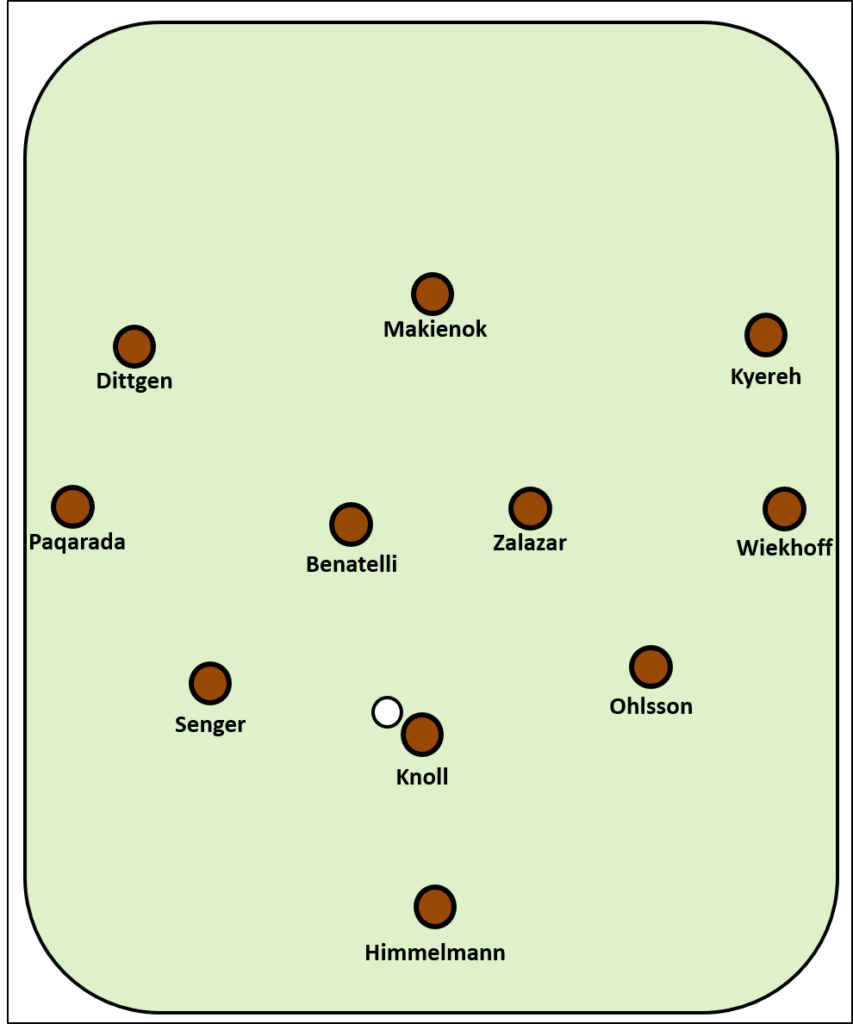
Beide Flügelverteidiger nun wesentlich tiefer positioniert, da vor ihnen zwei klare Außenstürmer agierten.
Es war also ein sehr positiver Test, nicht nur aufgrund des 1-0 Erfolges. Offensiv war das durchaus vielversprechend und es wirkte so, als wenn hinter vielen Aktionen ein wohl durchdachtes Konzept steckt. Kritisch könnte es für diese Art des Spielaufbaus mit vielen Spielern vor dem Ball dann werden, wenn der Druck auf die ballführenden Verteidiger hoch wird (hierzu dann bitte die „Exit-Strategie“ nutzen, wenn es zu hoch wird). Fehlpässe in solchen Momenten könnten schwerwiegendste Folgen haben. Aber während in der Vorsaison immer zentrale Mittelfeldspieler im Aufbau vorne eingerückt sind, waren Knoll und Aremu eher auf potenzielle Rückverteidigung bedacht. Das Zentrum ist bei Ballverlusten also ausreichend besetzt und daher läuft der FCSP hierbei auch nicht ins offene Messer.
Kannste sagen was Du willst (im Zweifel will ich das auch gar nicht hören): Nach den gestrigen Eindrücken freue ich mich auf die neue Saison (zumindest auf den Fußball, nicht darauf, dass ich Taktik-Analysen vor dem Rechner und nicht im Stadion machen darf).
// Tim
Alle Beiträge beim MillernTon sind gratis. Wir freuen uns aber sehr, wenn Du uns unterstützt.
MillernTon auf BlueSky // Mastodon // Facebook // Instagram // Threads // WhatsApp // YouTube
{:}{:en}The FCSP did win the last friendly before the first official match of the new season with 1-0 against SønderjyskE Futbold. The win of this friendly can quite frankly be characterized as well deserved. As probably known, I devoted my heart to tactical analyses of things happening on a football pitch. Thus, I would like to comment on my impressions of yesterday’s match and the new things I discovered in the play of FCSP which are due to Timo Schulz.
It appears as if the FCSP decided for a back-line of three as their formation of choice. At least this was the type of back-line which was used for the whole 90 minutes yesterday. The whole formation can be best described as a 3-5-2. And this formation did work out pretty well because the one goal scored could have been thoroughly followed by a few more. And on the other side, there were no goal shots of the opponent to mention which would have been of the same quality.
FCSP when building-up during the first half.
The back-line of three was formed by Buballa, Ziereis and Avevor. Joined by the two wing-backs Dittgen on the left and Ohlsson on the right respectively. The defensive centre midfield was occupied by Aremu and Knoll, while Daschner and Kyereh acted in the offensive half-spaces and Tashchy as a central striker.
When building up, it was remarkable to witness the wing-backs moving to the front up to the height of the last line of SønderjyskE. And even more remarkable and thus a clear difference to previous styles was the positioning play of Daschner and Kyereh when interacting with the back-line of three. They always somehow found their position in the last line, however, from there they always ran to the half-space in order to act as a relay-station when building-up further. But only seldom they could start directly from there. Anyway, when attacking the squad always used the „play with a third man“ in which a player positioned with his back towards the goal simply let the ball bounce back to a player who was already positioned with his eyes towards the opponent’s goal. This is by no means a new invention, however, up to now the FCSP only seldom used this technique as an underlying structure.
It was furthermore remarkable that the two outer central defenders, namely Buballa and Avevor, did move quite a lot with the ball whenever there was space available. And there was plenty of that during the first half, as due to the high positioning of the wing-backs, the respective opponent players were kept busy (and also, SønderjyskE was always rather pressing towards the centre).
Furthermore, when such spaces were reached, the ball was frequently passed diagonally across the pitch as there were chances emerging because of players running quickly towards these areas (especially Daschner frequently detected such spaces at SønderjyskE and intended to make use of them).

Both wing-backs move extremely towards the front. Thus, the outer central defenders could dribble into the half spaces with the ball at their feet. Daschner and Kyereh were also positioned in the last line but from there, they frequently dropped and became important options for passes.
FCSP defence
Also in the defence, the FCSP changed a lot. The frequently mentioned but only seldom processed order of „defending towards the front“ was mostly followed in yesterday’s friendly. When the ball got lost, the team consequently and compactly changed to Counter-pressing. With regards to direct goal chances, this worked-out much better during the second half compared to the first half (e.g. chances of Kyereh, 62.min, and Makienok, 67.min). This mostly caused that SønderjyskE could absolutely not change into an orderly built-up play and only managed to play a few phases of longer ball possession at the end of the first half only. Quite appealing.
The determination of many players when defending was also appealing. From Daschner to Dittgen, many worked their arses off and walked long distances to recover spaces again. But this is also very essential because due to the back-line of three and the high positioning on the wings, there’s already a huge space for opponent teams available if those manage to switch correctly after ball gains.
Ball gains is also the key-word to speak about Afeez Aremu. Egil, the blogger of IK Start did put it very nicely that Afeez Aremu is the player „where the attacks of the opponents end“. To me, this appeared a bit overestimating as there are usually more players involved in gaining balls. But yesterday, it became clear to what he was referring: Afeez Aremu is unbelievably strong to gain balls. Wow! But it doesn’t end there, he’s also very capable to make use of such gained balls. Of course, there were some passes yesterday which weren’t too accurate or wrong in timing. However, to me it appears as if there’s someone playing passes quite progressively which isn’t less than necessary to turn ball gains into a successful transitioning play.
And I would not name this kind of defensive formation a back-line of five but rather a 3-4-1-2 whenever pressing from the depth. Because the wing-backs did not drop entirely back to the line of the three central defenders. But this wasn’t necessary either due to the positioning of SønderjyskE and can thus easily be subject to change in other matches.
When pressing at a higher positioning, Kyereh, Tashchy and Daschner acted as some sort of front-line of three, which was, however, positioned a little bit further back, especially on the wings. Only if SønderjyskE passed the ball to the flanks and only if the FCSP did not detect a pressing-signal which became obvious when the opponent played a badly timed pass, the 3-4-1-2 formation formed itself.

lefts: Whenever SønderjyskE was still controlling the ball deeply in their own half and the FCSP did not press highly, some sort of pine tree formed at the FCSP (3-4-2-1).
right: When pressing in the centre from the depth, the wing-backs moved up to the front-line of three and Daschner dropped centrally between the two strikers.
This formation appealed and the FCSP was able to elicit a huge number of top chances up to the 70th minute. In the second half, Dashner was substituted for Makienok which caused Tashchy to play on the previous position of Daschner. Generally, I like it more when Tashchy is able to play in a deeper position. And the benefits of Makienok also became obvious very quickly: he’s such a great wall-player. And someone like him is extremely important whenever there are issues in a flat build-up and some sort of „exit strategy“ is desperately needed. A player who’s always available for long balls and due to his header capabilities, there’s an almost 50/50 likelihood that the FCSP is winning the second ball. So, it doesn’t become a huge problem and for sure no „give-away“ either when a long ball becomes necessary whenever the pressure against the built-up play is too huge.
A clear cut became obvious in the 70th minute when a bunch of players got substituted. This also caused a change in the basic formation on the pitch: The back-line of three was still kept, however, especially when building-up the formation changed into a classic 3-4-3 with two strikers on the respective flanks. While the 3-5-2 formation always tried to reach the half-spaces, this new formation rather aimed to gain spaces via the flanks as it is usually much easier to draw vertical lines between the players from there.
However, it was definitely remarkable that the substitution of a whole bunch of players and the change of formation caused some difficulties on the pitch so that I can name a clear favourite out of these two formations. It’s a pity that we weren’t able to witness Zalazar and Aremu playing together on the pitch. But due to their very similar style of playing, I am not entirely convinced if both players would make a good fit together.

Both wing-backs were positioned much deeper now because there were two wingers playing in front of them.
All in all, it was a very positive friendly not just because we won 1-0. The offensive play was very promising and it appeared as if many actions were actually based on a well-thought concept. However, there’s still a chance that the way to built-up with many players positioned in the front becomes threatening for the defender with the ball when attacked. (to solve this issue, please make use of the aforementioned „exit strategy“ ). Bad passes in such moments can have fatal consequences. But while during the previous season, the central midfielders frequently joined the attacking line when building up, Knoll and Aremu rather focused on defending yesterday. Now the centre will be staffed sufficiently enough when the ball gets lost so that the FCSP won’t walk right into the trap in such cases.
You can say whatever you like (and if doubts remain, I won’t listen anyway…) but after yesterday’s impressions, I am looking forward to the upcoming season (at least to the football but not to perform my tactical analyses just in front of the computer and not directly in the stadium).
// Tim (Translated by Arne)
{:}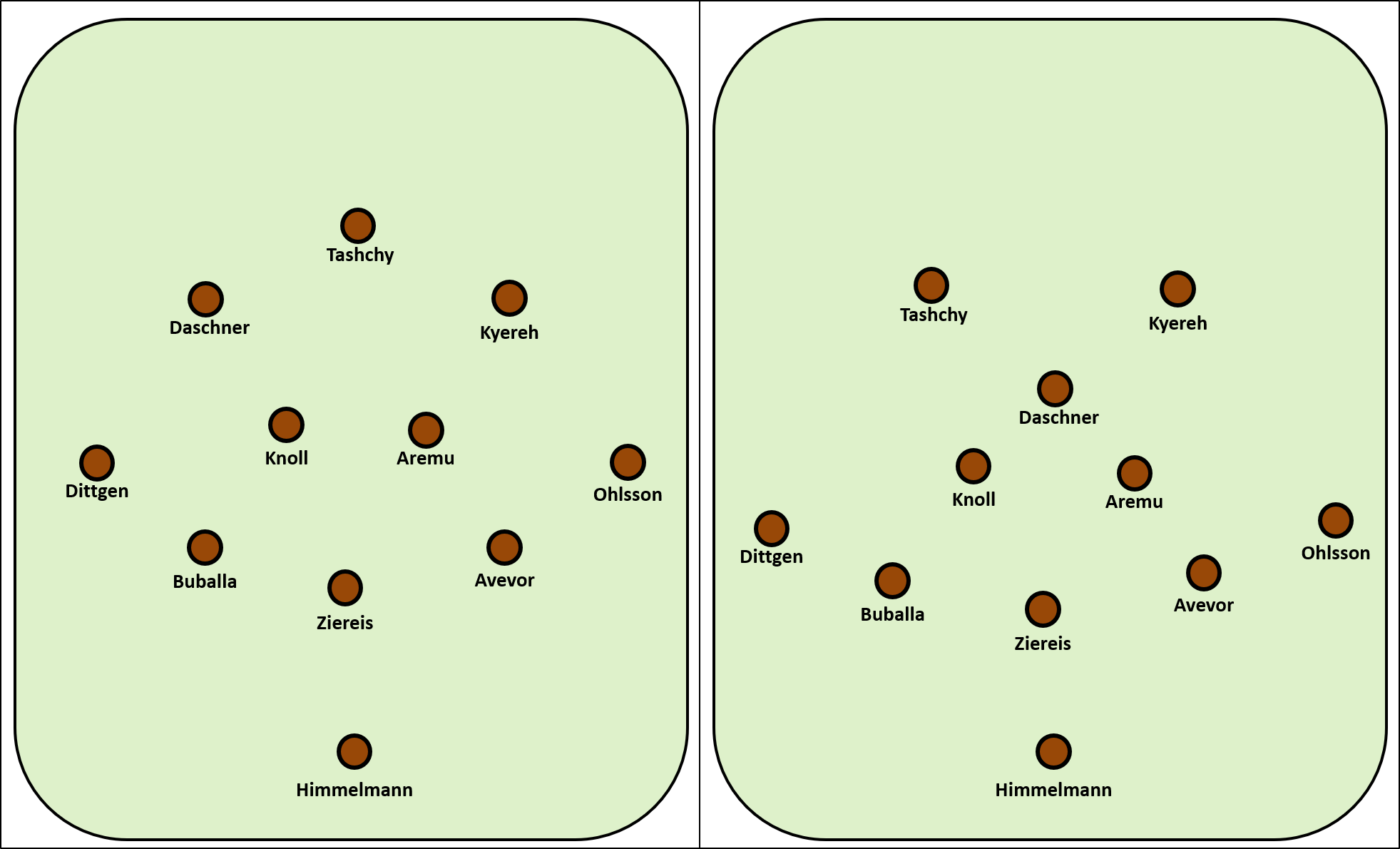

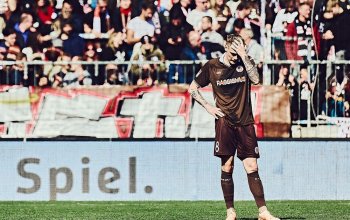
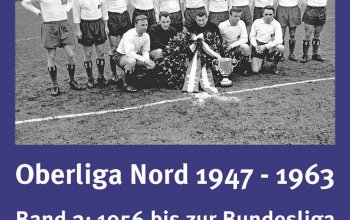

3 thoughts on “{:de}FC St. Pauli – SønderjyskE Futbold: Taktische Eindrücke{:}{:en}FC St. Pauli vs. SønderjyskE Futbold: Some tactical remarks{:}”